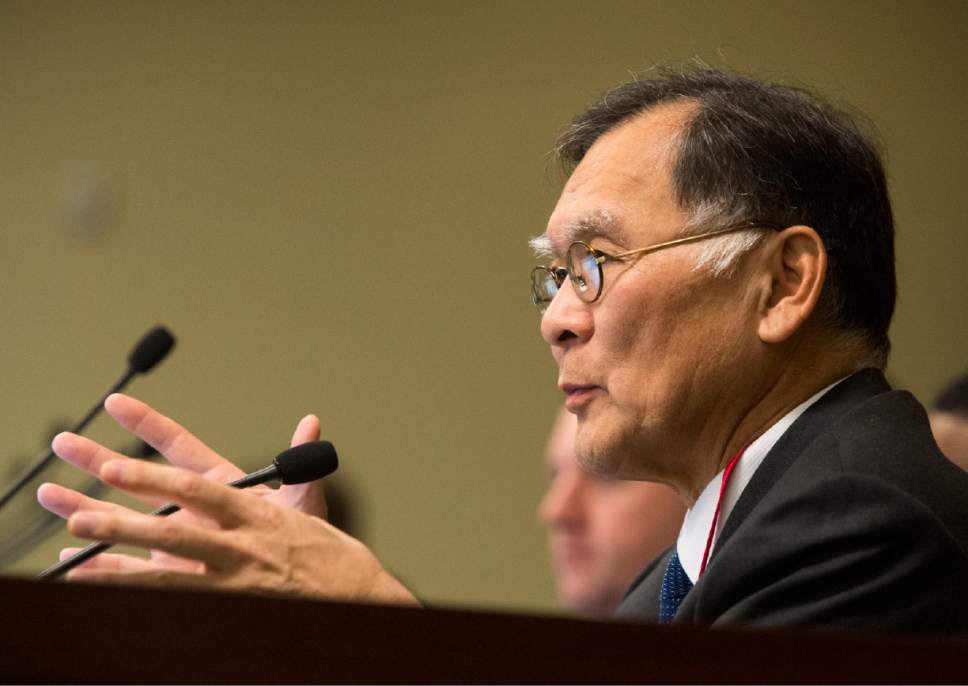This is an archived article that was published on sltrib.com in 2017, and information in the article may be outdated. It is provided only for personal research purposes and may not be reprinted.
Rep. Brian Shiozawa, an emergency room doctor, says he's seen too many motorcycle crash victims who might have lived had they worn a helmet. So he's trying to raise the mandatory age for wearing them in Utah from 18 to 21.
"The head," he said, "is one thing we can't live without."
His SB159 zoomed through the Senate Transportation Committee on a 5-2 vote Monday despite concerns that it may restrict the freedom of young adults too much. It now heads to the full Senate for consideration.
Shiozawa, R-Cottonwood Heights, talked about one recent victim who flipped across a car hood and landed in the road on his head, dying soon afterward.
"He might have lived with a helmet," he said. "Definitely, he had no chance without one."
He said motorcycle victims with traumatic head injuries often don't make it to the hospital, but those who do run up an average bill of $1.2 million. They quickly go beyond their own insurance coverage and end up on state Medicaid at taxpayer expense — one of many reasons he said the state should raise the age limit.
Shiozawa said he knows the argument that 18-, 19- and 20-year-olds are adults and should be capable of deciding to wear a helmet if they are old enough to go to war or vote.
But he said many studies show the brain is not fully developed until after age 21, especially in areas affecting impulse and reasoning. So he wants helmets to be required of a rider for a few more years, and he notes that the targeted age group has more crashes than older adults.
Michelle McOmber, CEO of the Utah Medical Association, added, "You don't drink until you are 21" for similar reasons.
Greg Douglas, with American Bikers Advocating Better Education (ABATE), complained: "You are taking a certain segment of the community and telling them that, You are weak-minded, you are too stupid to handle your own life and to make your own choices."
Sen. Jake Anderegg, R-Lehi, also doubted that the bill would make much real difference with young adults.
"You can't legislate against people making bad decisions," he said. "I don't see that this will save many lives."
Collette Hadlock, also with ABATE, said it would be wiser for the state to require a safety course teaching bikers how to avoid crashes.
Helmets may actually create safety hazards by restricting bikers' field of vision, causing fatigue and making it harder to hear, she argued.
But medical groups, safety groups, insurance agencies and those advocating for disabled people supported the bill and said it may help create a lifelong habit of wearing helmets.
"It will help save lives and lower the overall severity of injuries," said Jason Davis, operations director for the Utah Department of Transportation.
Utah had 40 motorcycle deaths last year and 200 accidents with severe injuries, Davis said; he did not list data by age.
Shiozawa said motorcycles are involved in about 1 percent of crashes but account for about 18 percent of deaths.





